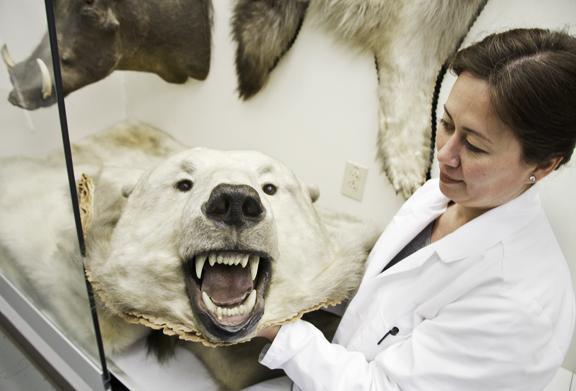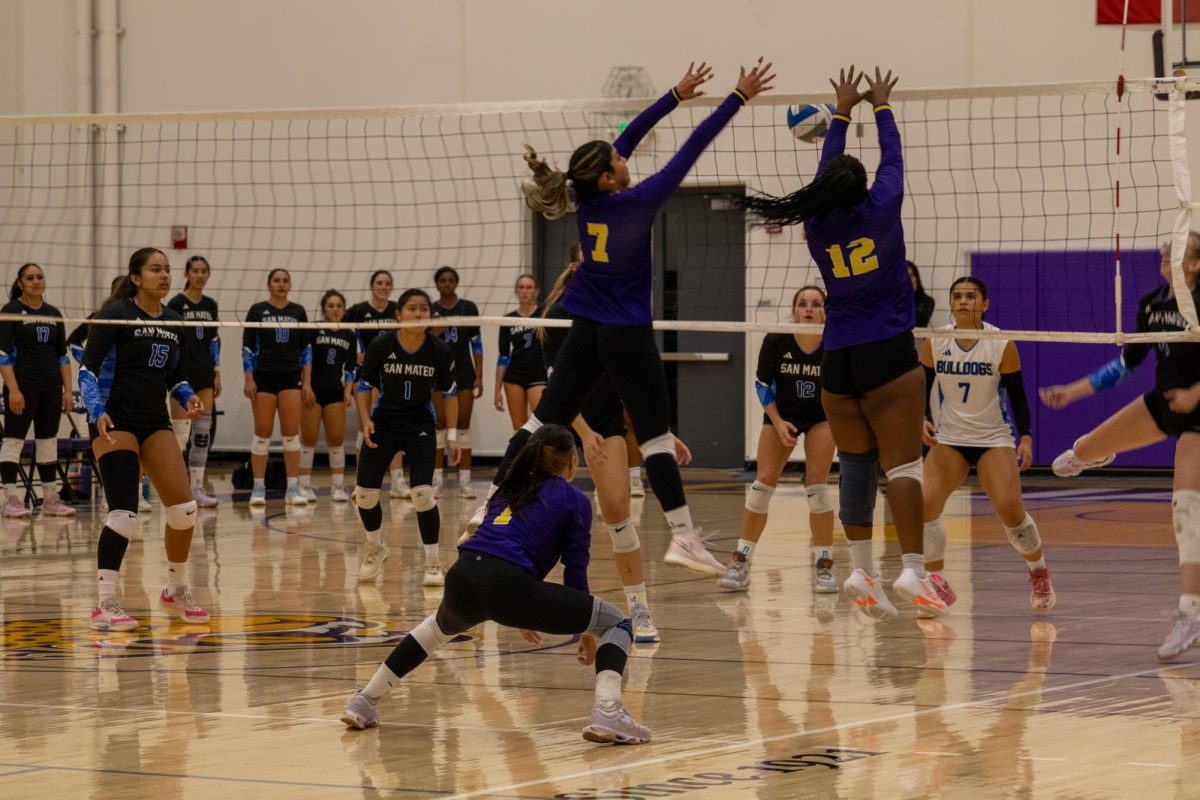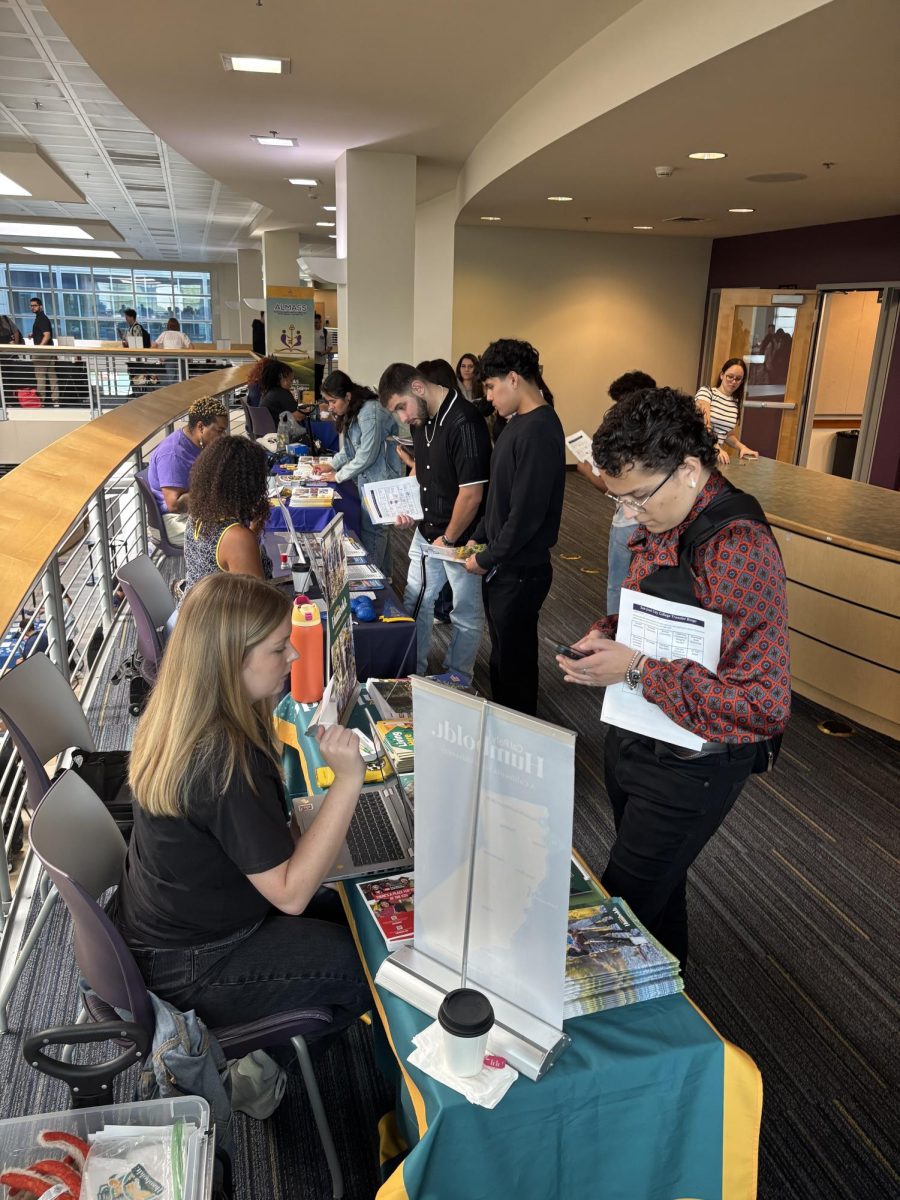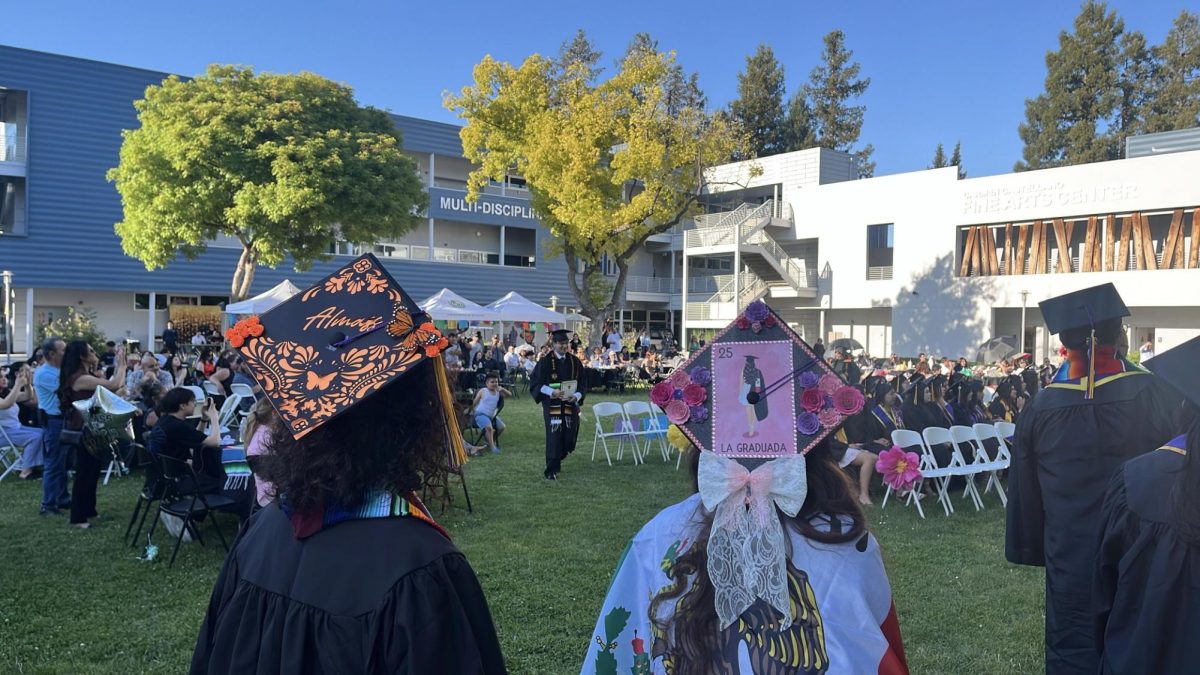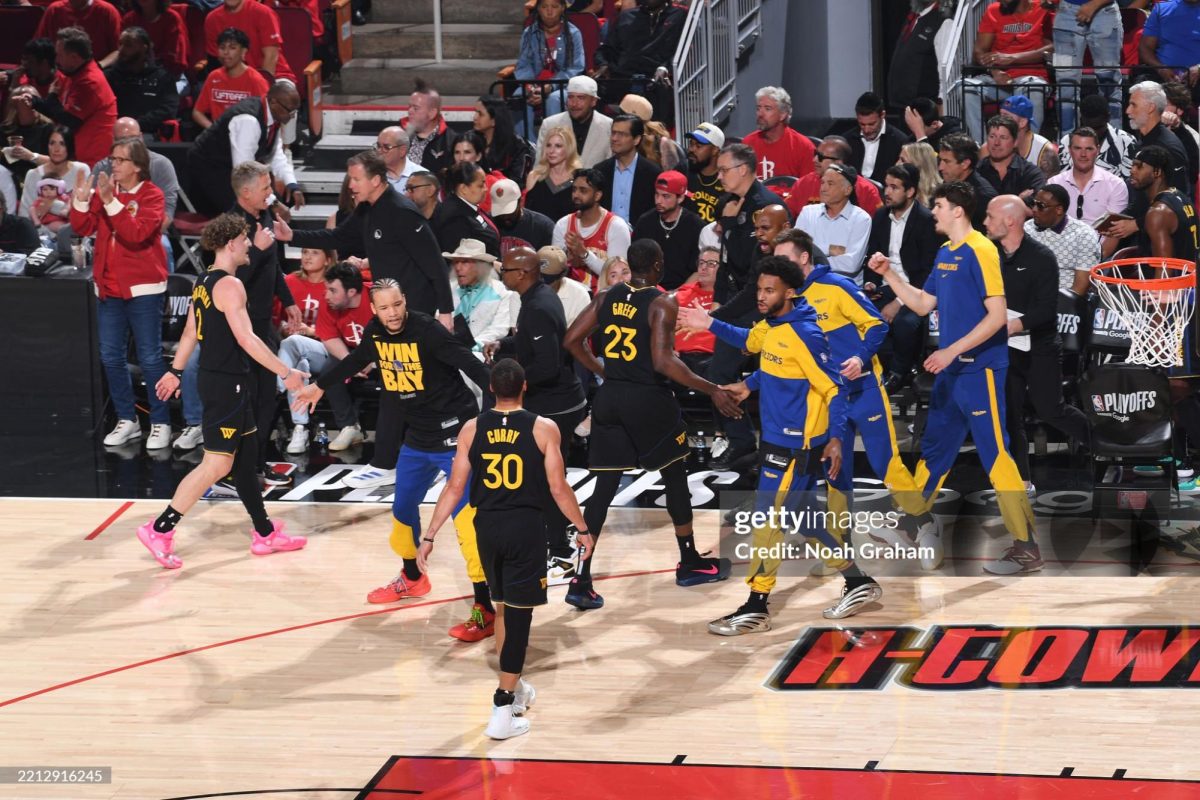Microscopes and dissections may be a staple of science classes, but it is a gaggle of bears, antelopes and other large beasts that presents the most unusual learning experience for San Jose City College students.
The collection of taxidermic animals, pelts and skulls on display in SJCC’s Science Building is comprised of African and North American specimens, ranging from dik-diks to falcons.
“A man (Gus Crane), who hunted big game wildlife in the late ’40s and ’50s, donated the collection to the school in 1976,” said Mark Newton, SJCC biology instructor.
Since Crane’s donation, the collection has undergone some changes.
“When we moved into (the new science) building, we had to pare down the number of specimens we brought,” Newton said. “So size was one of the criteria, and quality of the specimen was the other. We brought some of the best and made a display.”
Fortunately, the downsizing preserved the most impressive specimens, including a wide range of mammals, such as African buffalo and warthogs, and birds, such as pigeons and puffins.
“The bears are my favorite,” Newton said. “They’re unbelievable in size and ferocity. Just by looking at those big specimens, you think, ‘That’s something that’d be amazing to see in the wild.’”
Many of the collection’s animals, such as the mourning dove and raccoon, are native to San Jose, giving students the chance to get an up close look at animals they see locally.
“I would be very interested in seeing the displays,” said Eduardo Valle, 21, chemical engineering major. “Even though my major has nothing to do with biology, I always like learning about new things, and I find nature very interesting.”
Despite the educational opportunity presented by the collection, many students are unaware of its existence.
“I had no idea the (science) department had an animal collection,” said Chris Cuzner, 29, organic chemistry major.
Contributing to students’ unawareness of the collection is its current location in the Science Building’ s Biology Learning Center, where it shares floor space with computer workstations.
“Right now, the physiology classes make the most use of (the room),” Newton said. “There are simulations that allow them to play with blood pressure and all kinds of biological things.”
Plans for developing the Biology Learning Center further are uncertain.
“At this point, it’s unforeseeable,” Newton said. “Ideally, it would be wonderful if we could have our biology students drop in there. We could have models and microscopes for them.”
The opportunity to visit the Biology Learning Center and see the collection is available to all SJCC students.
If you are interested in seeing the specimens, schedule a time to visit with an SJCC biology instructor.

